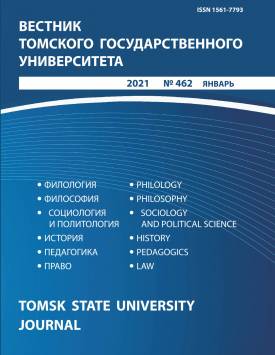Same Origins, Different Destinies: New Migrants vs Descendants of Migrants
The article sheds light on certain peculiarities of immigration to France, which has become a multicultural country. The authors explain how the destinies of two categories of “immigrant” youth differ. The first are the “beurs”, children and grandchildren of migrants who arrived in France during the 1960s and 1970s, generally from the Maghreb. The second are the “blédards”, who migrated themselves from these countries during adolescence with their parents or in the framework of family reunification. After a short description of the successive waves of migration which have regularly reached France and a terminological clarification on the meaning of the words “foreigner” and “migrant”, the authors show how the trajectories of those who are French citizens, know the language and have attended the school system from the start differ from those of newcomers, although the two groups are often confused. The article presents analysis from the theoretical works devoted to the study of different waves of migration, in the USA and in other countries, then focuses on a presentation of the educational trajectories of the new arrivals and those of the descendants of migrants. Particular attention is paid to migrants' adaptation to the labor market. Newcomers have less difficulty finding an internship than their classmates born in France. They are also more easily exploited, because they compensate their poor French language adopting a deferential attitude towards employers. When unemployed, they often find a job more easily than the descendants of migrants by relying on ethnic niches and networks of fellow citizens. The article underlines the role of the social environment in determining adaptation paths which can lead to acculturation and social mobility, to assimilation within a marginalized urban environment, or to economic integration into ethnic niches. The more hostile the environment and the less the migrants are adapted to the country's economic and cultural codes, the more the ethnic community tends to rely on itself in order to protect its children from a form of assimilation seen as harmful. Finally, the authors present the different attitudes of young people from the two groups towards the host society. For the descendants of migrants, it is common to assimilate to groups of young people in low-income neighborhoods and to copy the behavioral pattern characteristic of the inhabitants of these neighborhoods with a high concentration of immigrant and minority populations. When they are victims of stigmatization because of their ethnic origin or their neighborhood of residence, these young people become very critical, sometimes adopting oppositional attitudes to the French society to which they belong. On the other hand, newcomers struggle to find their place, as they still feel in transit, are not necessarily sure to stay in the country which they see as a haven comparing to the difficult living conditions of their native country.
Keywords
France, immigration, acculturation, migrants' descendantsAuthors
| Name | Organization | |
| Schiff Claire | Université de Bordeaux | claire.schiff@u-bordeaux.fr |
| Debrenne Michèle | Novosibirsk State University | micheledebrenne@gmail.com |
References

Same Origins, Different Destinies: New Migrants vs Descendants of Migrants | Vestnik Tomskogo gosudarstvennogo universiteta – Tomsk State University Journal. 2021. № 462. DOI: 10.17223/15617793/462/13
